VUE.JS DEVELOPMENT IN 2019

Vuex, Vue Router and Typescript

Bruce Cantarim
Digital Media Frontend Developer - Arctouch Brasil
What is


VUE.JS?
So...
What is Vue.js |


- Well... it's a javascript framework. A progressive one.
The Basics
- It was first released in 2014.
- It's open source and MIT.
- And it's used by huge companies.
What is Vue.js |


Who uses it?






What is Vue.js |


Fast growth
- As of yesterday, 139k vs React's 130k stars on Github.
- Powering ~400k websites, ~4k new sites per month.
- It's getting smaller and faster soon.
- The codebase is being rewritten in Typescript.
What is Vue.js |


What does it looks like?
<div id="app">
{{ message }}
</div>var app = new Vue({
el: '#app',
data: {
message: 'Hello Vue!'
}
})HTML
JS
Where do I


START?
So...
Where do I start? |


- Vue Mastery's Intro to Vue.js Free Course:
Links, links, links
- Vue's Official Getting Started Guide:
- Vue's Official News Podcast:
Where do I start? |


- A full system for rapid Vue.js development.
The Vue CLI
$ npm install -g @vue/cli$ yarn global add @vue/cliWhere do I start? |


- To create a new project, run:
Creating a Project
$ vue create project-name$ cd project-name && vue ui
# or
$ cd project-name && yarn servethen...


The Vue UI

Where do I start? |
Let's talk about


TYPESCRIPT
Let's talk about Typescript |


- Well... it's a superset of Javascript.
What is it?
- And it transpiles to Javascript.
- It's all about OOP, static typing, mostly.
- And VS Code integration is amazing with it.
Let's talk about Typescript |


- It will prevent about 20% of the bugs in development.
Why it matters?
- It lets you learn it progressively.
- It improves the readability of the code.
- 3rd most loved language of Stackoverflow's 2019 survey.


var Greeter = (function () {
function Greeter(message) {
this.greeting = message;
}
Greeter.prototype.greet = function () {
return “Hello, “ + this.greeting;
};
return Greeter;
})();JS
Let's talk about Typescript |
A quick comparison
class Greeter {
private greeting: string;
constructor (private message: string) {
this.greeting = message;
}
greet() {
return `Hello, ${this.greeting}`;
}
}TS
It's just Javascript with some


ADDITIONAL FEATURES
Don't be afraid...
Working with


COMPONENTS
Working with Components |


- Vue Property Decorator:
The First Secret
$ npm install -S vue-property-decorator$ yarn add vue-property-decorator

export default {
props: {
propA: {
type: Number
},
propB: {
default: 'default value'
},
propC: {
type: [String, Boolean]
},
}
}
JS
import { Vue, Component, Prop } from 'vue-property-decorator'
@Component
export default class YourComponent extends Vue {
@Prop(Number) readonly propA!: number
@Prop({ default: 'default value' }) readonly propB!: string
@Prop([String, Boolean]) readonly propC!: string | boolean
}TS
Vue Property Decorator
Working with Components |


There are 7 decorators and 1 function (Mixin):
- @Emit
- @Inject
- @Model
Vue Property Decorator
Working with Components |
- @Prop
- @Provide
- @Watch
- @Component (vue-class-component)
- Mixins (vue-class-component)
SPAs and the


VUE ROUTER
SPAs and the Vue Router |


- The Vue Router is a part of the official ecosystem.
There's no secret here
- It is amazing for your SPAs.
- It's loaded with features, including transitions.
$ npm install -S vue-router$ yarn add vue-router

import Vue from 'vue';
import Router from 'vue-router';
import Home from '@/views/Home.vue';
Vue.use(Router);
export default new Router({
routes: [
{
path: '/',
name: 'home',
component: Home,
},
],
});<template>
<div id="app">
<router-view />
</div>
</template>
...router.ts
app.vue
SPAs and the Vue Router |
What does it looks like?
State management and


VUEX
State Management and Vuex |


- Vuex is also a part of the official ecosystem.
Your Single Source of Truth
- It's data store that can get, mutate and realize actions.
- Makes it a breeze to pass values in your application.
$ npm install -S vuex$ yarn add vuex

import Vue from 'vue';
import Vuex, { StoreOptions } from 'vuex';
import { RootState } from './types';
import { profile } from './profile/index';
Vue.use(Vuex);
const store: StoreOptions<RootState> = {
state: {
version: '1.0.0'
},
modules: {
profile
}
};
export default new Vuex.Store<RootState>(store);store.ts
State Management and Vuex |
There's room for improvement
export interface RootState {
version: string;
}types.ts
import { Module } from 'vuex';
import { getters } from './getters';
import { actions } from './actions';
import { mutations } from './mutations';
import { ProfileState } from './types';
import { RootState } from '../types';
export const state: ProfileState = {
user: undefined,
error: false
};
const namespaced: boolean = true;
export const profile: Module<ProfileState, RootState> = {
namespaced,
state,
getters,
actions,
mutations
};profile/index.ts
Reference:
We'll get


THERE
State Management and Vuex |


The second secret
- Vuex Class:
$ npm install -S vuex-class$ yarn add vuex-class

import { Vue, Component } from 'vue-property-decorator';
import { State, Getter, Action, Mutation } from 'vuex-class';
@Component
export class MyComp extends Vue {
@State('foo') stateFoo
@Getter('foo') getterFoo
@Action('foo') actionFoo
@Mutation('foo') mutationFoo
created () {
this.stateFoo // -> store.state.foo
this.getterFoo // -> store.getters.foo
this.actionFoo({ value: true }) // -> store.dispatch('foo', { value: true })
this.mutationFoo({ value: true }) // -> store.commit('foo', { value: true })
}
}TS
State Management and Vuex |
Vuex Class
Now, let's go back to


THE STORE
State Management and Vuex |


The Third Secret
- Vuex Module Decorators:
$ npm install -D vuex-module-decorators$ yarn add -D vuex-module-decorators

import { VuexModule, Module, Mutation, Action } from 'vuex-module-decorators';
export interface CounterState {
counter: number;
}
@Module
export default class Counter extends VuexModule implements CounterState {
public counter = 0;
@Action({ commit: 'increment' })
public add1(): number {
return 1;
}
@Mutation
private increment(delta: number): void {
this.counter += delta;
}
get getCounter(): number {
return this.counter;
}
}counter.ts
State Management and Vuex |
Vuex Module Decorators
import Vue from 'vue';
import Vuex, { StoreOptions } from 'vuex';
import Counter from './counter';
Vue.use(Vuex);
export interface RootState {
counter: Counter;
}
const store: StoreOptions<RootState> = {
modules: {
counter,
},
};
export default new Vuex.Store<RootState>(store);store.ts
Sass variables in


VUE
Sass variables in Vue |


- You could use PostCss instead. But should you?
A few details first
- This is applicable to vue-cli created projects.
- The many style flavors of Vue.js
- Why would you want global variables?


module.exports = {
publicPath: './',
css: {
loaderOptions: {
sass: {
data: `@import '@/styles/variables.scss';`,
},
},
},
};vue.config.js
Sass variables in Vue |
Here's how to do it
Packing with


ELECTRON
Packing with Electron |


- Electron is a way to package your project as an app.
What? Why?
- It's gives you control over the version of Chromium.
- You can use it to standartize your deliverables.
- It supports a huge array of plataforms.
Packing with Electron |


- Vue-CLI Plugin Electron Builder
The last secret
$ npm install -S vue-cli-plugin-electron-builder$ yarn add vue-cli-plugin-electron-builder

Packing with Electron |
Build Settings


THANK YOU.

We are hiring !
bruce@cantarim.com
linkedin.com/in/brucecantarim